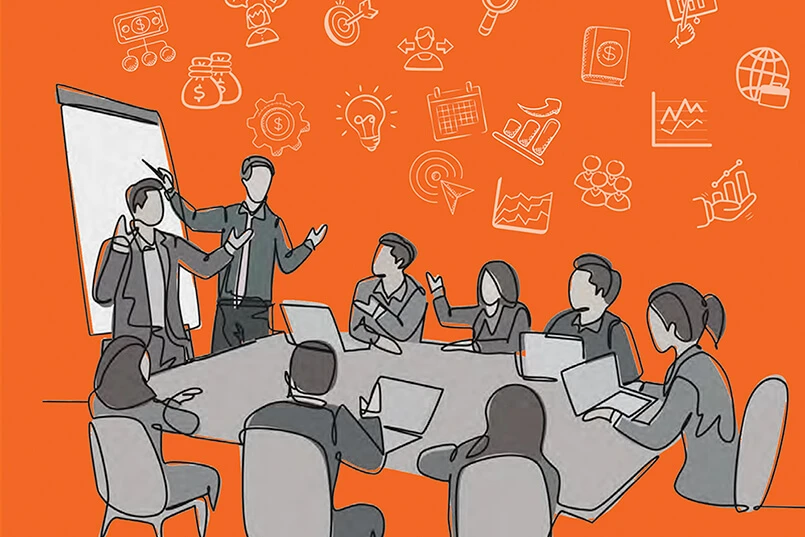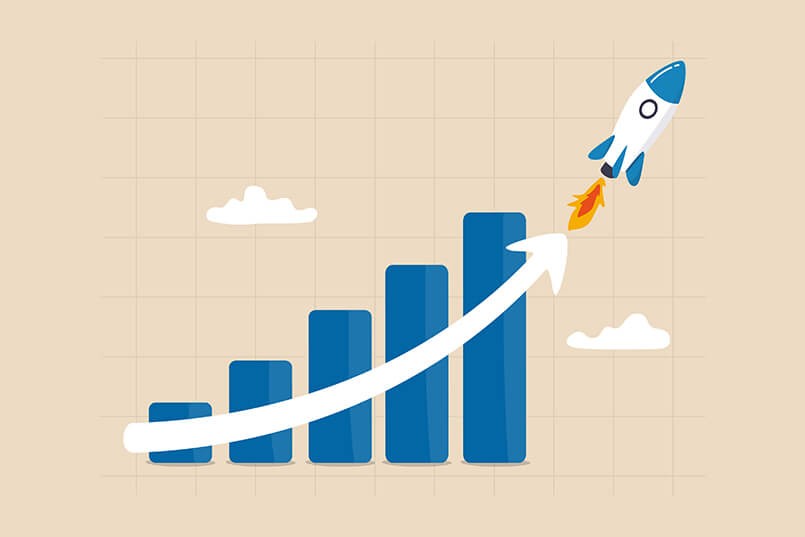The chemistry meeting is an essential step to appointing an agency. It is often the first time agency and client teams meet face to face and always the first time in the context of the specific pitch. And yet there is a tendency from both teams to approach it in a formulaic way – with a set menu of what should be presented and how both teams should behave.
In our view at TrinityP3, the chemistry meeting needs to be treated in a more organic way. It is always specific to the project at hand and demands preparation and planning from both teams. We always provide feedback to the agency teams after the meetings, win or lose, and the same questions always come up. So here are some tips to help get the meeting details right before it happens rather than with the benefit of hindsight.
1. Set your objective for the meeting.
This is the most critical thing to do right at the start of planning the presentation. And yet it is the most often forgotten part of the process for agency teams.
Ask yourself why you are there and what you want to be the result. You have to be clear about what is your main objective. And in our experience, if that objective is anything other than the very simple one of securing the next meeting, you have gone wrong straight away.
With this objective in mind, you can be clear about what you need to tell the audience, what topics you need to cover, and how you will close the meeting. You will be much more focused and impactful with your presentation content and give yourself a great chance of getting across the message you want to deliver.
2. Do your homework
Step one here is to read the brief. If you don’t have one, ask for it from the pitch consultant. Once you’ve read it, read it again and start planning your response around it. Then do some research and background checks, and look for clues and cues.
It isn’t just about the client’s marketing objectives. It’s also about the people. So get some background on the team you are going to meet. Use LinkedIn, your contacts and the marketing press to create a picture of what this client is like, where they’ve come from, what connections you have in common and what gets them out of bed every morning.
Quiz the pitch consultant on what they are looking for, why things aren’t working with their existing agency if they’ve got one, how the team is structured and who the decision makers are, including any who will not be in the room.
3. Who to bring to the chemistry meeting?
Deciding on the number of people to bring along and which ones will be most appropriate is always difficult.
Most clients will ask to meet the people working on the account should you win it. All agency teams puzzle over this one – it seems a bit rude not to bring along the CEO, the Creative Director and the Planning Director because they are the ones who tend to have the highest profile careers and most exhaustive experience. You might also argue that no agency ever happens to have a team standing by doing nothing right now, which can be deployed onto the new account from day one. You will almost certainly have to be hired to staff any new business. So, the answer is to use your common sense.
Never bring more people than you need. Having people in the room with no role to play in the meeting always raises unnecessary questions from a client – “Why were they there?” ”Who was that person?” and so on. If you decide to bring the top guns along, make sure they will have a role in the future and be clear about what it will likely be. Understand the skills the client is looking for from your agency and be sure your team on the day can cover those bases – in-depth knowledge is essential as you are not just there to make a presentation; you need to be able to handle questions too.
Ultimately, this is a “chemistry” session, and what the client is looking for is an appropriate set of skills and experience, all wrapped up in a team they think they will get on with over an extended period.
4. Prepare and rehearse.
Reread the brief, and structure your meeting to answer it.
Here is a big tip that most agencies forget – you are not at the chemistry meeting to present for the whole hour. Chemistry depends on both teams having a part to play. So only prepare enough presentation points to fill half the allotted time, and plan to use the rest for conversation – questions and answers from you to them and vice versa.
Many agency teams wonder how to keep the presentation that short. So, remember that you will almost certainly have sent through a whole lot of profiling information ahead of the meeting – that’s what got you selected to be there in the first place. Don’t feel obliged to regurgitate all the factual stuff that the client team has already read. If it makes you more comfortable, ask the question before you start as to whether they need to hear what they should already know. The answer will invariably be “no thanks”.
For your half hour of presenting, you can return to the brief, answer the questions it asks and give everyone in your team a role. Remember, at this point, your original objective in being there – is to secure the next meeting.
Now, all you need to do is prepare your presentation, think about some intelligent questions to ask after you have finished and then rehearse the hell out of it (and you do need to do this, so make sure you allow time to do it properly)
5. Be yourself. But be memorable
Yes, your agency team should be themselves. But – and this is the critical bit – be yourselves on a good day. In fact, on your best day. If being yourself involves, for example, talking too quickly or quietly or being a bit dull, that will not help you.
And you are all part of a team. Ensure you act like one – don’t contradict, argue, or forget each other’s names or job titles. I’ve seen all those things happen and worse, and they do not play well.
It’s always good to make a great start. How you enter the room, introduce yourselves and engage the client team is essential, so plan it out.
Demonstrate your interest in the client and their market category, engage them in dialogue up front and inject some personality into the meeting to make you memorable. It’s all about getting that second date.
6. You are not there just to present. Engage!
You need to prepare just as hard for the second half of the meeting, for when you stop presenting. So think about what questions you are likely to get asked. Think about some great questions you can ask yourself.
Think also about some interactive exercises you could use if the conversation flags. Maybe you could have a choice of six case histories and invite the client to pick the two they would like to hear about – so much more involved than having to sit through work that they have no interest in.
All of this will let the client team interact with you and, along the way, learn a lot more about what you would be like to work with daily, which is why you are all there, after all.
7. Involve the whole client team.
Just as you have thought about who needs to be at the meeting from your team and what their role is, you can be sure that everyone from the client team is also there for a reason.
While you may be confident about who the head client is by title, many CMOs will have an opinion yet leave the decision up to their team, who will be working with the agency daily. They will go with the majority unless they indeed oppose the decision.
So it is vital to involve and engage all client team members equally. They are in the room for a reason – work out what this is and respond to it equally during the presentation and discussion phases.
Be prepared for difficult questions – they will be asked for a reason, maybe to see how you deal with them rather than just to hear the answer.
8. Check-in throughout the date
After all that polishing and rehearsal, there is a tendency to go onto autopilot for your chemistry session. Never forget to keep reading the room and watch for that client engagement. You need to be aware of both positive and negative signals and be able to respond accordingly.
It’s not unknown for agency people with brilliant IQs to have relatively little EQ. So bring someone on the team with that excellent EQ and make them responsible for noting any points in the meeting where you are losing a client. They will know how to read people and the signs of disinterest and can quietly inform other agency team members to up the energy, move on, change tack, etc.
9. Close the deal – the second meeting
At the end of any good sales meeting, it is always important to ask for the sale. And there is an essential sales element to the chemistry session. So at the end of the hour, return to your original objective and ensure you have covered the necessary territory to secure that next meeting. Be sure you have asked for it specifically.
If you’ve missed anything and are out of time, arrange to send something afterwards to answer outstanding questions.
And, of course, a memorable ending is the following most crucial meeting requirement after the memorable entrance.
10. The de-brief
Whether you get through or not, the debrief is always essential.
TrinityP3 consultant teams will always give all participating agencies full and honest feedback on the chemistry meeting, and there is always some good learning to take away for next time. Ensure you insist on this from your pitch consultant even if you don’t want to know.
It’s also worth a wash-up with your team – some honest views on how it went, how involved everybody felt in the meeting and what could have been done better, or maybe what could have been better left out.
If you didn’t get through because the chemistry wasn’t right, then you have still done your job correctly, and you weren’t meant to work together. But if you do get through, it’s on to the real hard work – answering the pitch brief – knowing that you are building on a genuinely strong base.
You can learn more about how we can advise you on being more successful in your agency positioning and credentials presentations here.




